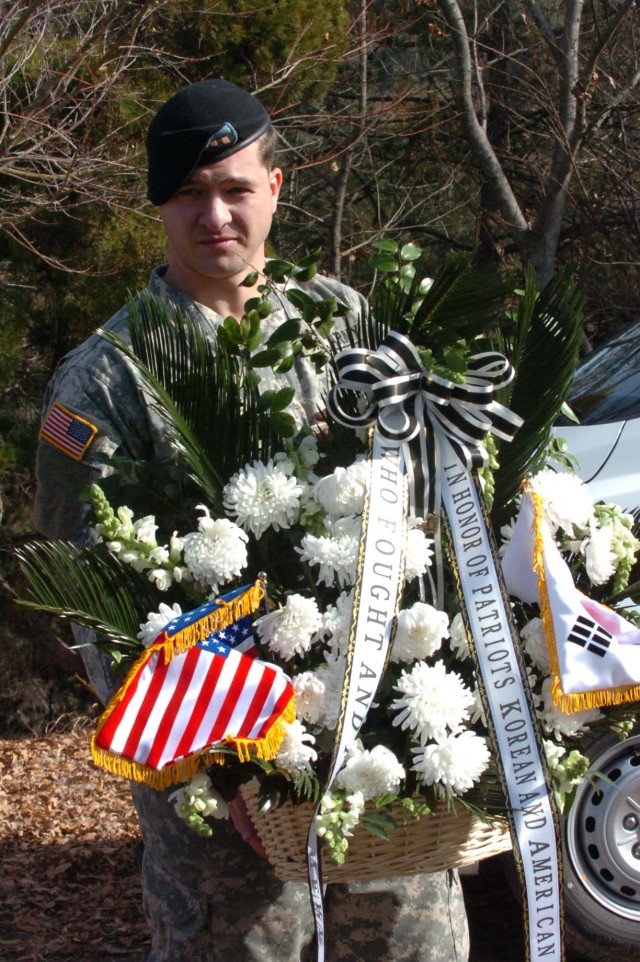The guns were silent. Tanks no longer roared in fierce anger. The cries of battle were nonexistent as officers from the 2nd Battalion, 9th Infantry Regiment gathered for a staff ride where, more than 50 years ago, U.S. and ROK Soldiers fought with blood, sweat and tears in defense of South Korea.
Atop the hillside, the wind swept briskly as the Soldiers viewed the vast Naktong riverbed, where a critical battle took place for an area known as the Pusan Perimeter.
The Pusan Perimeter was vital to the war because it provided a port for the U.S. Army to bring in supplies and reinforcements. It is also where the 2nd Infantry Division began to push the enemy north.
Day 1 of the staff ride began with the leaders conducting a tactical exercise without troops. A TEWT allows leaders to test strategies without actual combat using the eight troop leading procedures.
The leaders of 2-9 Inf. Regt. broke into small groups and used the first two company level troop leading procedures, receiving the mission and issuing a warning order.
After analyzing their mission, the groups gave a presentation to Lt. Col. Michael Rauhut, 2-9 Inf. Regt. commander, on a specific battle and their understanding of events as they transpired. They also devised a plan of action that they would use today to defend the area using today's equipment.
Early the next morning, the "Manchus" boarded a bus with maps and battle plans in hand and traveled to each site to discuss any changes they, as leaders, would make based on the terrain.
"One of the challenges we have as leaders is visualizing the fight," Rauhut said. "We have to see the enemy, see the terrain we are going to fight on. By using the ground we actually fought on during the Korean War, we are able to touch on both the current lessons learned and train as well as connect with our history."
For Capt. Paul Tanghe, former executive officer of Co. C, 2-9 Inf. Regt., the staff ride linked the past with the present.
"This fight is important to understand because even though the international situation has changed since 1950, even though the Korean domestic situation has changed, even though technology of our Army has changed and the capability of the ROK Army is so far beyond what the situation was in 1950...the geography of Korea hasn't changed," said Tanghe. "You can't understand what a war did look like in Korea and what a war would look like in Korea unless you understand the terrain."
In addition to understanding the fight, the group met with Lee, Chil Young, a South Korean War veteran who shared his memories of fighting alongside the "Manchus" as a KATUSA during the Korean War. Lee traveled to the memorial, where he and Rauhut laid a wreath made of white chrysanthemums at the memorial. Chrysanthemums are the traditional flower used in Korea to offer condolences.
The staff ride also gave leaders from 2-9 Inf. Regt. an opportunity to walk in the shoes of those who fought before.
Tanghe summed up his experience of the staff ride using the words of T.R. Fehrenbach, who wrote one of the most renowned books on the Korean War.
Fehrenbach wrote "Men who have never walked these hills will never adequately understand what happened to the 2nd Division."
"So we are here to walk these hills and to understand what happened to the 2nd Division and from that, understand what American and Korean Soldiers did here in 1950 and to understand what we can do here today," said Tanghe.






Social Sharing